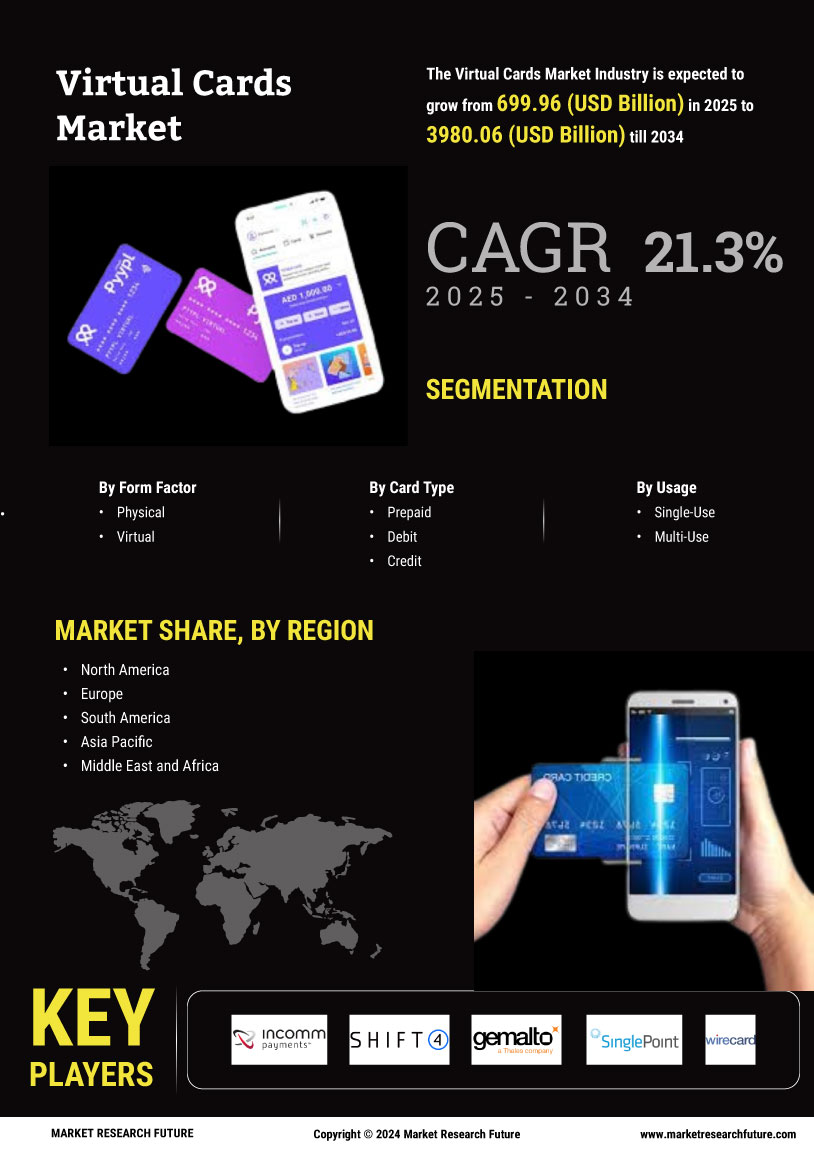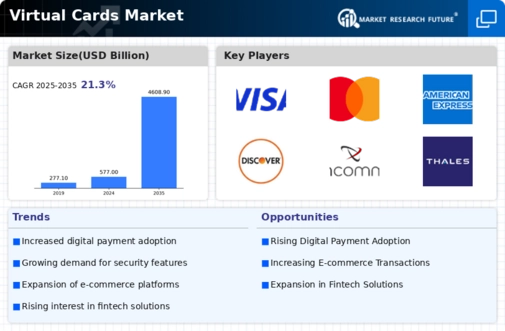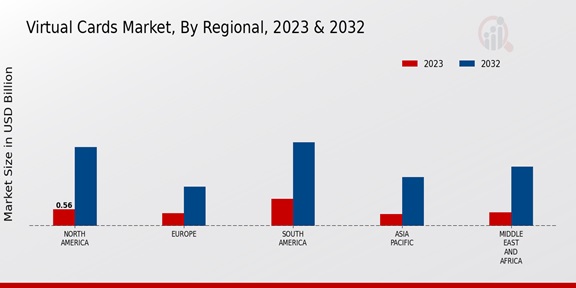Growing E-commerce Sector
The rapid expansion of the e-commerce sector plays a crucial role in driving the Global Virtual Cards Market Industry. With online shopping becoming a staple for consumers, the demand for secure and efficient payment methods intensifies. Virtual cards provide a convenient solution for e-commerce transactions, allowing users to make purchases without exposing their primary card information. This trend is underscored by the projected growth of the e-commerce market, which is expected to contribute significantly to the Global Virtual Cards Market Industry. As more consumers engage in online shopping, the adoption of virtual cards is likely to increase, further propelling market growth.
Market Growth Projections
The Global Virtual Cards Market Industry is projected to experience substantial growth, with estimates indicating a market size of 577.0 USD Billion in 2024 and a remarkable increase to 4608.9 USD Billion by 2035. This trajectory suggests a compound annual growth rate (CAGR) of 20.79% from 2025 to 2035. Such projections highlight the increasing acceptance and integration of virtual cards into everyday financial transactions. The growth is likely fueled by technological advancements, evolving consumer preferences, and the expanding e-commerce landscape, positioning the Global Virtual Cards Market Industry as a dynamic and rapidly evolving segment within the broader financial services market.
Enhanced Security Features
Security remains a paramount concern in financial transactions, and the Global Virtual Cards Market Industry addresses this through enhanced security features. Virtual cards offer unique card numbers for each transaction, minimizing the risk of fraud and unauthorized access. This heightened security appeals to both consumers and businesses, fostering trust in digital payment methods. As organizations increasingly prioritize cybersecurity, the demand for virtual cards is expected to rise. The Global Virtual Cards Market Industry is thus positioned to benefit from this trend, as users seek safer alternatives to traditional payment methods, potentially leading to a significant market expansion.
Increased Focus on Financial Management
The Global Virtual Cards Market Industry benefits from an increased focus on financial management among consumers and businesses. Virtual cards offer users the ability to track spending in real-time, providing insights into their financial habits. This feature is particularly appealing to businesses seeking to manage expenses effectively. As organizations strive for greater financial transparency and control, the demand for virtual cards is expected to rise. The Global Virtual Cards Market Industry is thus poised for growth, as users recognize the advantages of utilizing virtual cards for budgeting and expense management, potentially leading to a more organized financial landscape.
Regulatory Support for Digital Payments
Regulatory frameworks increasingly support the adoption of digital payment solutions, positively impacting the Global Virtual Cards Market Industry. Governments worldwide are implementing policies that promote cashless transactions and enhance the security of digital payments. This regulatory backing encourages businesses and consumers to adopt virtual cards as a legitimate payment method. As the landscape for digital payments evolves, the Global Virtual Cards Market Industry is likely to benefit from these supportive measures, fostering an environment conducive to growth. The anticipated market expansion could see the industry reach 4608.9 USD Billion by 2035, reflecting the positive influence of regulatory initiatives.
Rising Adoption of Digital Payment Solutions
The Global Virtual Cards Market Industry experiences a notable surge in the adoption of digital payment solutions, driven by the increasing preference for contactless transactions. As consumers and businesses alike seek efficient and secure payment methods, virtual cards emerge as a viable option. In 2024, the market is projected to reach 577.0 USD Billion, reflecting a growing inclination towards digital financial tools. This trend is further supported by advancements in technology and the proliferation of smartphones, which facilitate seamless transactions. Consequently, the Global Virtual Cards Market Industry is likely to witness accelerated growth as more users embrace these innovative payment solutions.
























